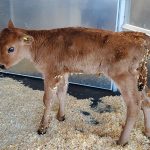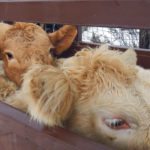Cow-calf producers and veterinarians are often focused on which vaccines to use as part of their herd health program. However, the timing of those vaccines may be a critical decision as well. Several factors can play a role in the decisions surrounding when a particular vaccine should be administered. The age of the animal can […] Read more
Stories by John Campbell, DVM, DVSC
Numbers matter: you can’t manage what you don’t measure
Most producers would rather be out working with their cattle than doing paperwork. As a result, the act of collecting, maintaining and using records often takes a back seat to other efforts around the ranch. However, I believe that on some herds, the limitations of herd records is a major obstacle to making genetic advances […] Read more
Failure with antimicrobial drugs: does it mean resistance?
When there is no improvement in the animal’s condition after giving it antibiotic therapy, what next? Often it involves weaned calves being treated for respiratory disease, but it could also be a sick cow or baby calf as well. There are several reasons why antibiotic treatments might fail. One of the most common is because […] Read more
Changing bacterial populations evident in recent study
A recent article published in the journal Veterinary Microbiology sheds light on the antimicrobial resistance carried by bacteria that cause respiratory disease in western Canadian feedlot cattle. The research was carried out at four commercial feedlots in southern Alberta by Dr. Edouard Timsit and colleagues at the University of Calgary’s Faculty of Veterinary Medicine and […] Read more
BVD virus can cause congenital brain condition
The other day one of my veterinary students showed me a video on his smartphone of a calf from his father’s ranch. The calf was walking with a very unusual gait in which its movements seemed somewhat exaggerated. All four limbs were affected and the calf seemed to sway while walking. I couldn’t give any […] Read more
Herd nutrition requires extra attention following drought
A recent study published in the Canadian Journal of Animal Science sheds light on the question of how this year’s drought might affect next year’s calf crop. Dr. Cheryl Waldner and Dr. Fabienne Uehlinger from the Western College of Veterinary Medicine at the University of Saskatchewan described a study where blood samples were collected from […] Read more

Risk of sulfate toxicity grows as drought deepens
As we deal with drought conditions in many areas of the Prairies, water quality that cattle drink may also be affected. Sulfate is a common mineral component and is present at some level in most water sources, as well as in many feeds. Some areas of the Prairies may have wells with high levels of […] Read more
Tailored biosecurity advice can make a difference
Beef cattle producers make decisions every day that can affect the risk of infectious disease entering their cattle operation. Decisions on where and when to buy new stock or deciding whether to use a community pasture can have major impacts on the risk of infectious diseases such as bovine viral diarrhea (BVD), infectious bovine rhinotracheitis […] Read more

Diagnosis and treatment of colicky calf a pain in the gut
Colic is a general term that describes abdominal pain. Many horse owners are familiar with the term because abdominal pain is a common condition in horses. However, young calves can also exhibit colic symptoms and it can be caused by a variety of conditions depending on the age of the calf. Abdominal pain in calves […] Read more
Dealing with Johne’s disease in the beef herd not easy
Johne’s disease is relatively easy to diagnose in an individual cow, either using clinical signs or at post mortem. The characteristic symptoms of progressive weight loss and chronic watery diarrhea are easily identifiable. On postmortem, the thickened intestines and corrugated surface of the intestinal wall are also fairly characteristic of this disease. The major challenge […] Read more




